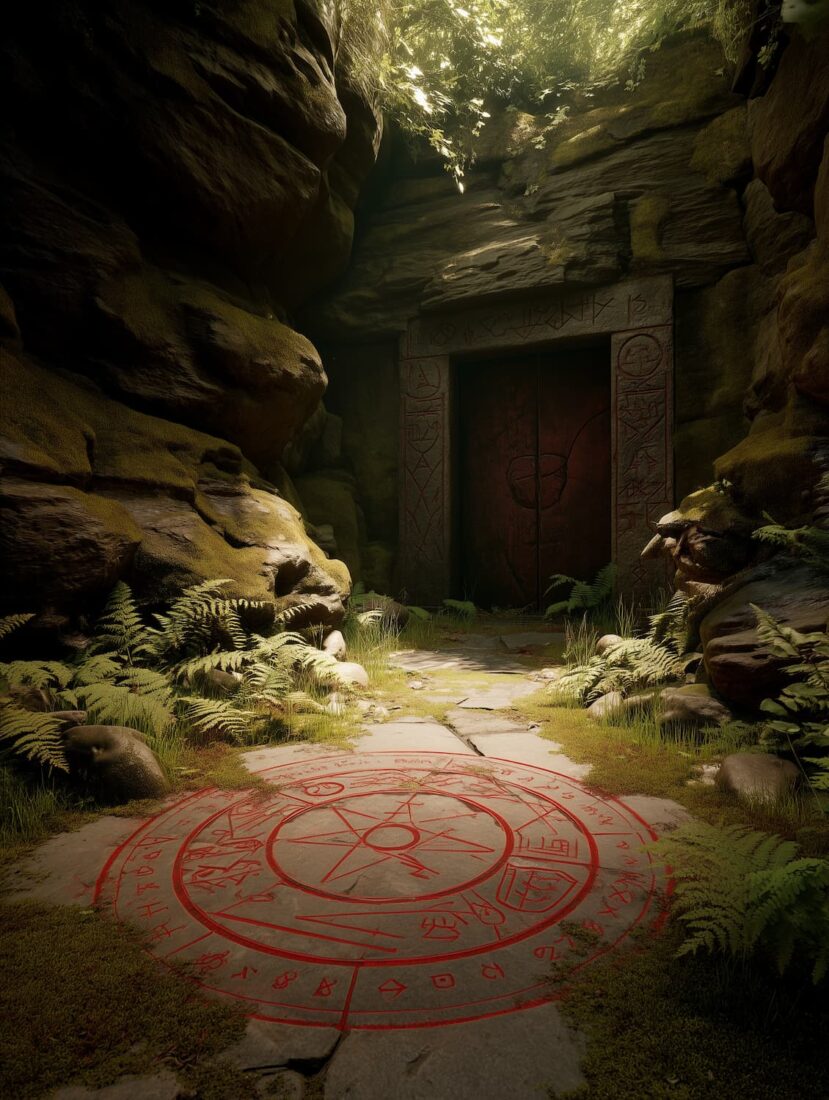
Not all stories in games are told through dialogue, cutscenes, or quest text. Some of the most powerful narratives unfold silently—through empty rooms, broken fences, flickering lights, and forgotten objects. This is the domain of environmental storytelling: when the game world itself becomes the storyteller.
Environmental storytelling isn’t new, but it has grown from a background aesthetic to a sophisticated tool that developers use to immerse, inform, and move players without a single word. It’s in the quiet corners, the subtle clues, and the worldbuilding details that players find meaning—often without realizing they’re being told a story at all.
What Is Environmental Storytelling?
At its core, environmental storytelling is about using physical space, objects, architecture, and atmosphere to communicate narrative. It invites the player to observe, interpret, and piece together fragments of the world to understand what has happened—or is happening.
Unlike traditional storytelling, which hands the player exposition directly, this form trusts them to discover the story on their own terms. That discovery feels personal, earned, and often more immersive than any spoken line.
The Power of Suggestion
Consider walking into a house in a post-apocalyptic game. The door hangs open. There’s a dinner table set for four, but only two plates have been touched. A child’s toy lies in the hallway, a glass of water rests half full on the kitchen counter. No notes, no voices—yet you already feel the presence of the family that once lived there. You know something happened, something sudden.
This kind of storytelling doesn’t need words. It works through suggestion. Players aren’t told what occurred—they’re invited to feel it, to interpret the evidence and build their own emotional response.
Why It Matters
Games are, fundamentally, interactive spaces. When narrative is embedded in those spaces, players don’t just consume a story—they live it. This is especially important in genres where immersion is key, like horror, exploration, or science fiction.
A game that successfully uses environmental storytelling can:
- Convey backstory without interrupting gameplay
- Build atmosphere without exposition
- Reward curiosity and attention
- Deepen emotional engagement with the world
Moreover, it allows players to become co-authors of the narrative. They assemble meaning through their own exploration, which leads to a stronger sense of agency and investment.
Examples in Game Design
Some of the best environmental storytelling comes from games that intentionally say very little, letting the world speak instead.
- Bioshock (2007)
The underwater city of Rapture is a masterclass in architectural narrative. Cracked walls, decaying propaganda posters, and spliced mannequins all tell the story of a utopia gone wrong. Every corridor hints at ambition, collapse, and madness—even before a single voice is heard.
- The Last of Us (2013)
Abandoned homes, scrawled notes, and improvised shelters give insight into the personal stories of people who didn’t survive. A famous optional side story involves following a series of clues about a man named Ish, who built a hidden community underground. It’s never explained aloud—but it’s one of the most emotionally resonant arcs in the game.
- Gone Home (2013)
This indie game tells a deeply personal story through exploration of a house. There are no enemies, no combat, no explicit narration—only rooms filled with letters, mixtapes, school notes, and objects that reveal the lives and relationships of the family who lives there.
- Inside (2016)
Playdead’s puzzle platformer offers zero dialogue, yet delivers one of the most unsettling and mysterious narratives in modern gaming. Players interpret the meaning through visual symbolism, recurring imagery, and strange environments that feel hauntingly purposeful.
Design Strategies
How do developers achieve powerful environmental storytelling? There are several consistent techniques:
- Intentional Object Placement
Every item tells a story. A gun on a nightstand, a book under a pillow, a broken toy—each can imply history, mood, or conflict.
- Lighting and Color
Lighting can guide attention and suggest emotion. Warm tones may convey safety or nostalgia, while harsh shadows or red glows signal danger or decay.
- Level Layout and Flow
The way a player moves through space affects what they learn and how they feel. Narrow corridors create tension, open areas offer freedom, and vertical spaces may suggest aspiration or hierarchy.
- Environmental Change Over Time
Letting players revisit areas that have changed (e.g., seasons, destruction, decay) reinforces the sense of a living world with its own history.
- Soundscapes and Silence
Ambient sound, or the deliberate absence of it, can add layers of narrative. Dripping water, distant sirens, or eerie silence all suggest what’s happening—or what happened.
Challenges and Considerations

While environmental storytelling is powerful, it requires subtlety. Too little detail leaves players confused; too much can feel forced or artificial. Developers must trust players to notice small clues—but also design those clues with enough clarity and context.
Another challenge is accessibility. Not all players interpret visual cues the same way. Developers need to be aware of different levels of experience and provide multiple layers of storytelling for different types of players—both casual and analytical.
Environmental Storytelling Beyond Games
Interestingly, this technique isn’t exclusive to video games. It’s found in theme parks, museum exhibits, immersive theater, and escape rooms. What makes games unique is that players act within the space, making their role in the narrative more personal.
In a well-crafted game, you don’t just visit a place—you uncover it, connect with it, and sometimes even change it.
Conclusion
Environmental storytelling is not just a design trend—it’s a narrative philosophy. It embraces the core strength of games: the ability to explore, interpret, and emotionally inhabit a world. When done well, it builds stories that linger not because they were told to us, but because we found them ourselves.
In the invisible narrative, silence speaks, shadows suggest, and every corner may hold a memory. And in those quiet moments of discovery, games show us that sometimes, the most powerful stories are the ones we were never told directly.
